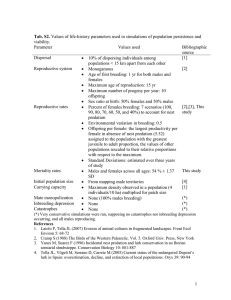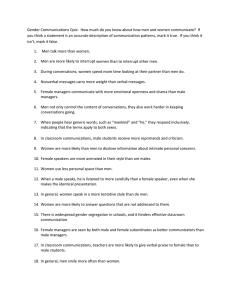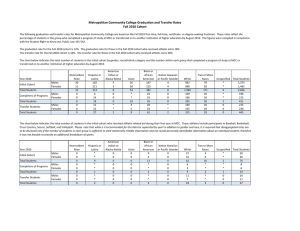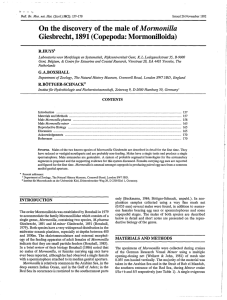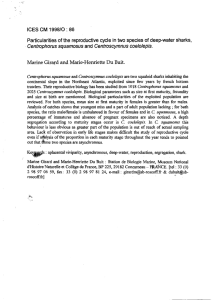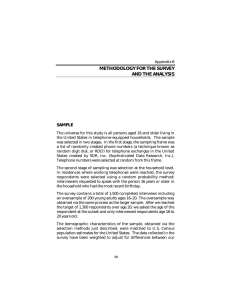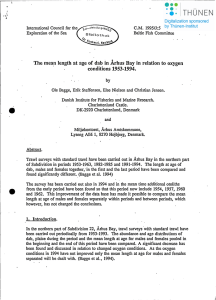Some differences between men and women
advertisement
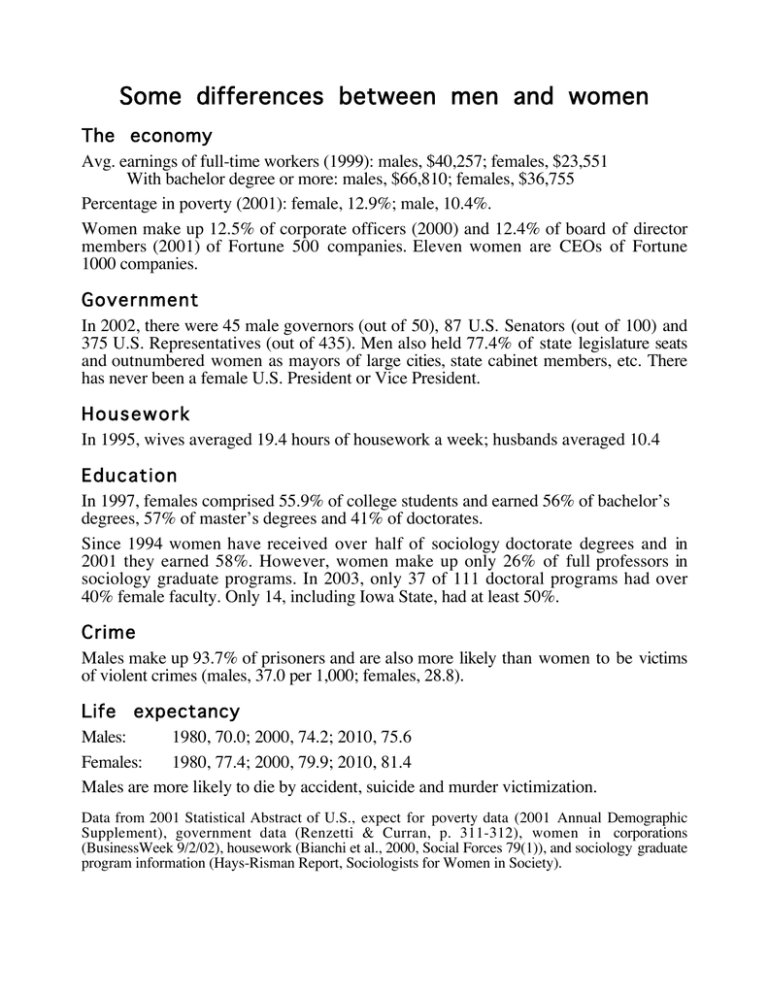
Some differences between men and women The economy Avg. earnings of full-time workers (1999): males, $40,257; females, $23,551 With bachelor degree or more: males, $66,810; females, $36,755 Percentage in poverty (2001): female, 12.9%; male, 10.4%. Women make up 12.5% of corporate officers (2000) and 12.4% of board of director members (2001) of Fortune 500 companies. Eleven women are CEOs of Fortune 1000 companies. Government In 2002, there were 45 male governors (out of 50), 87 U.S. Senators (out of 100) and 375 U.S. Representatives (out of 435). Men also held 77.4% of state legislature seats and outnumbered women as mayors of large cities, state cabinet members, etc. There has never been a female U.S. President or Vice President. Housework In 1995, wives averaged 19.4 hours of housework a week; husbands averaged 10.4 Education In 1997, females comprised 55.9% of college students and earned 56% of bachelor’s degrees, 57% of master’s degrees and 41% of doctorates. Since 1994 women have received over half of sociology doctorate degrees and in 2001 they earned 58%. However, women make up only 26% of full professors in sociology graduate programs. In 2003, only 37 of 111 doctoral programs had over 40% female faculty. Only 14, including Iowa State, had at least 50%. Crime Males make up 93.7% of prisoners and are also more likely than women to be victims of violent crimes (males, 37.0 per 1,000; females, 28.8). Life expectancy Males: 1980, 70.0; 2000, 74.2; 2010, 75.6 Females: 1980, 77.4; 2000, 79.9; 2010, 81.4 Males are more likely to die by accident, suicide and murder victimization. Data from 2001 Statistical Abstract of U.S., expect for poverty data (2001 Annual Demographic Supplement), government data (Renzetti & Curran, p. 311-312), women in corporations (BusinessWeek 9/2/02), housework (Bianchi et al., 2000, Social Forces 79(1)), and sociology graduate program information (Hays-Risman Report, Sociologists for Women in Society).









